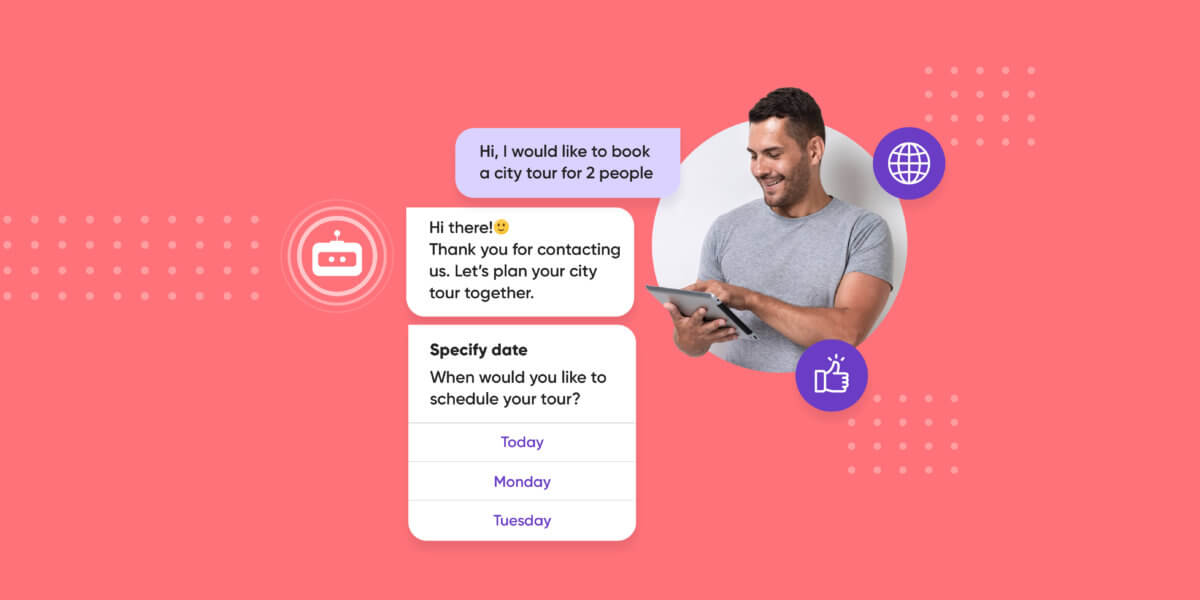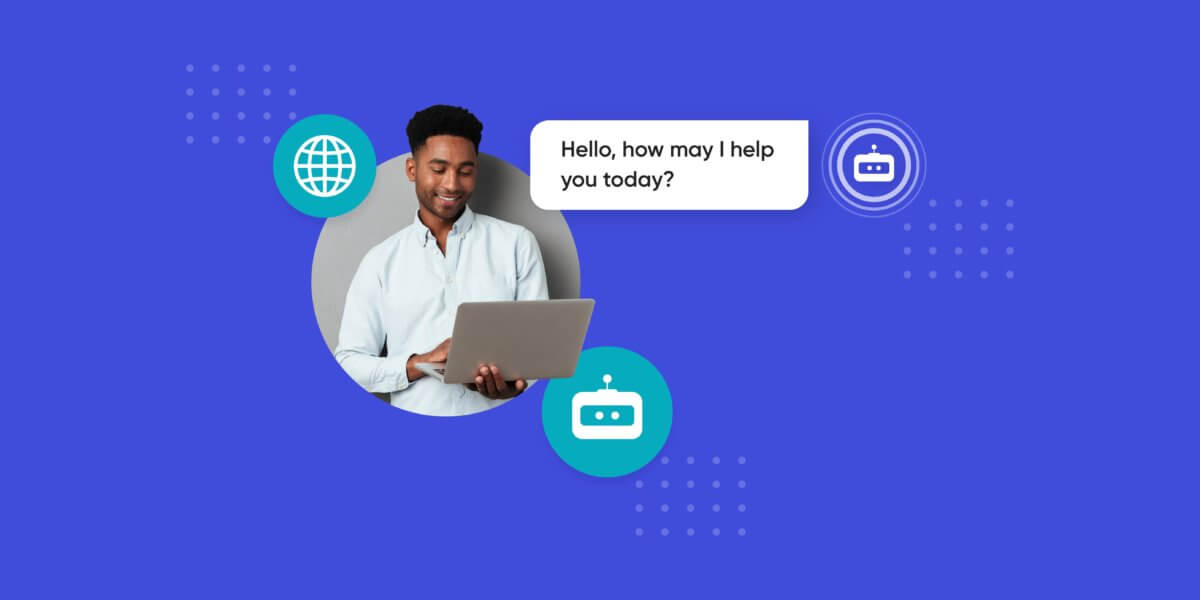Chatbot Websites, and The Future of Website Metrics

Chatbot Websites, and The Future of Website Metrics
In this blog, we will be covering what are the important website metrics to be evaluated and how can a chatbot influence performance of the website.
As we’ve discussed before, your website is your greatest pool of convertible leads and prospects. Customers with a willingness, interest and ability pay arrive at your doorstep every day; only to have you not come to the door, or answer six hours later when you do.
If you Google “the key metrics to track for your website”, you will be presented with 6 different indicators for what would define a successful website.
These metrics are
- website traffic,
- traffic sources,
- bounce rate,
- top pages,
- conversion rate and
- conversion rate by traffic sources.
Here’s what industry experts have to say about customer support KPIs. Focusing on these small details can help your business grow steadily and fruitfully. Apart from the benefits of using a website chatbot, you will learn what a chatbot is, and how a chatbot can help improve each of these metrics consistently.
1. Website Traffic
Customers come back to companies that help them succeed. The most basic of all website metrics are the number of customers who come to your site, also known as website traffic.
Your website traffic is a barometer of how your website is doing. It helps you understand whether your website is growing, stagnating, or declining. Your website traffic can also help you identify successful campaigns from a macro perspective. If you just published a new blog post on an established publication and you see a spike in the number of visitors to your website, you know the campaign is working. Additional traffic metrics include the ability to distinguish between repeat visitors and unique ones. A high repeat customer traffic is great news, it means you’ve built a loyal fanbase of dedicated followers, while high unique customer traffic means that you’re attracting lots of new customers.
Traffic is a very important determinant for how Google ranks your website through SEO. A site that has a lot of traffic is an indicator of a highly demanded resource.
Chatbots bring more customers to your website, through better engagement and increased visibility. Happy customers are likely to keep coming back to your site, and encouraging other people to do so.
Companies like Acadgild used chatbots to boost their traffic, and increase conversion rates by 240%.
Discounting the instance when a customer has definitively made up his mind to buy your product/service and yours alone, most of your traffic comes to your website with a single goal; To ask questions, and get answers.
Why should I choose this product/service? What does it cost? Does it fit my requirements? How is it better than the other products/services in the market?
But since they’re on a computer hundreds of miles away, one of two things will happen.
- They’ll spend the next thirty minutes on your platform searching through every resource you have to find that answer. (unlikely)
- They’ll leave in thirty seconds and won’t come back. (likely)

A chatbot can help you talk to your customers in real time, answer queries and guide prospects through the sales flow. This results in customers staying on your website for longer, coming back more frequently and by virtue, having your site rank higher in search ranking thereby driving additional traffic.
2. Traffic Sources
In the digital world, companies don’t just have a single point of contact.
This means that the traffic to your website probably comes from various sources. It is important to understand where your traffic comes from, so as to identify your best and worst performing sources. You can break down your traffic into four distinct channels
- Organic Search: traffic coming via the search engines
- Referral: traffic from another website
- Direct: traffic typing your domain into the browser
- Social: traffic from social media
More likely than not, you have various platforms where customers can reach out to you (Facebook, Instagram, Whatsapp, LinkedIn, Crunchbase, AngelList). It is important to understand that there is a large drop off between the customers who visit these referral/social sites and the customers who will end up landing on your website.
These customers represent lost business potential; customers you could've tapped but you didn't.
Using chatbots you can talk to these customers on the platforms of their choice, regardless of whether it’s on your app, Facebook or Whatsapp. This ensures that none of your customers go unengaged, dramatically increasing both your traffic and your pool of leads.
Nykaa used a chatbot on their app and engaged 99.7% of all its customers in under 1 minute.
3. Bounce Rate
Often confusing, and always unassuming is the metric known as bounce rate. Unlike other metrics, the bounce rate for a website is not defined in white and black. Higher is not always better and lower is not always bad.
Bounce rate refers to the number of visitors who leave your website right after arriving, also defined as “single-page sessions.” Bounce rates are varied in their applications. The bounce rate for a blog, for example, would be substantially lower than the bounce rate for an e-commerce site. The ideal bounce rate lies in a smaller spectrum, often between 26 to 40 percent. Any lower, and it reflects a lack of dynamic content on the website. Any higher, and it means customers leave far too quickly. Tackle issues like slow load times, broken code, poor website aesthetics, and badly targeted keywords.
While you can define ideality for your website on your own, the end goal for an ideal bounce rate is simple; To keep your customers interested. Even when done right, customers often need a reason to want to stay.
Use a chatbot to achieve just that. A chatbot makes large pages more interactive, by allowing customers to skim through the information using the interface. Your chatbot works on any page, and you’re given the ability to run different flows on. Instead of losing your customers the moment they arrive, or have them stuck reading 40+ pages of FAQ’s, use chatbots to lead your customers to the right part of your website with ease.
Suggested reading: 7 Features That Make A Good Website Chatbot Great
4. Top Pages
The only reason to identify success, is to repeat it. Top pages refer to the pages on your website that receive the most amount of traffic in a specific amount of time. You can alternatively define what “top” means based on your preferences or needs. For example, the number of shares a piece on your blog has is a better indicator of success than pure traffic.
Knowing what pages receive the most traffic is hugely important because it gives you real-world data showing what your audience responds to. If you experiment with different types of content, this is where you can begin to analyze what’s working, and produce more of the material your readers like.

The same goes for flows with your Chatbot. Since chatbots divide each part of the sales funnel into individual messages, Conversational Automation Analytics can measure how much time each user spends on each message, what call to actions they respond to, what their attention span for certain forms of media are, and heat maps to track which part of certain cause “friction” to the sales process.
This means you go into the next metric ready to fire on all cylinders.
Must Read: Top 5 examples of Brands using Website Chatbot for Customer Support
5. Conversion Rate
Conversion rates are one of the most important metrics you can track for your website as they represent what all the work you’ve put in comes down to. A conversion rate increase of even 1%-2% could double your profits. Which it is arguably crude, your conversion rate is key because it has a significant impact on your bottom line.
Conversions are defined based on the type of the website you run, but they’re loosely quantified into three end goals.
- A sale – for e-commerce or SaaS websites.
- A subscriber to an email list – for marketing campaigns.
- A social share – for blogs and publications.
If lots of your traffic hits one of these predefined goals, you have a high conversion rate. The higher your conversion rate, the better your website is doing. So what is the average conversion rate for the top 25th percentile of companies?
Chatbots can often double, even triple conversion rates for the website that use them effectively. Traffic turns into questions, answered questions turn into cold leads, cold leads turn into qualified ones, and that in turn increases sales; all inside the framework of the bot.
Suggested Reading: Customer Support Metrics to Track and How to Improve Them
Using a chatbot, Apollo Munich increased the number of policies they sold by 9x.
6. Conversion by Traffic Source
Combining the need to talk to customers across platforms with the principle of conversion rates gives you conversion by traffic source. Conversion rate by traffic source is divided into four traffic source categories: organic search, referral, direct, and social.
Traditionally, different traffic sources convert differently. For example, a customer who enters “verloop.io” into a search engine is more likely to convert than someone who found Verloop on Facebook. This is because a customer who directly types the website out is more likely to know the company and its offerings, as opposed to someone who happened to chance upon the company on social media.
Alongside driving more traffic to these different sources, custom chatbot for website also help convert these customers better. Using FAQ automation and sentiment analysis, the bot can also treat customers who come from different types of traffic differently, improving conversion and engagement. This means that your customer who happened to look at your Facebook page already has an understanding of your product/service, and is more likely to make a purchase based on the weight of that information.
The end goal for all Conversational Sales, Marketing and Support is simple; Make business personal again.
Click here to build your own E-commerce Chatbot in under 5 minutes for free!






